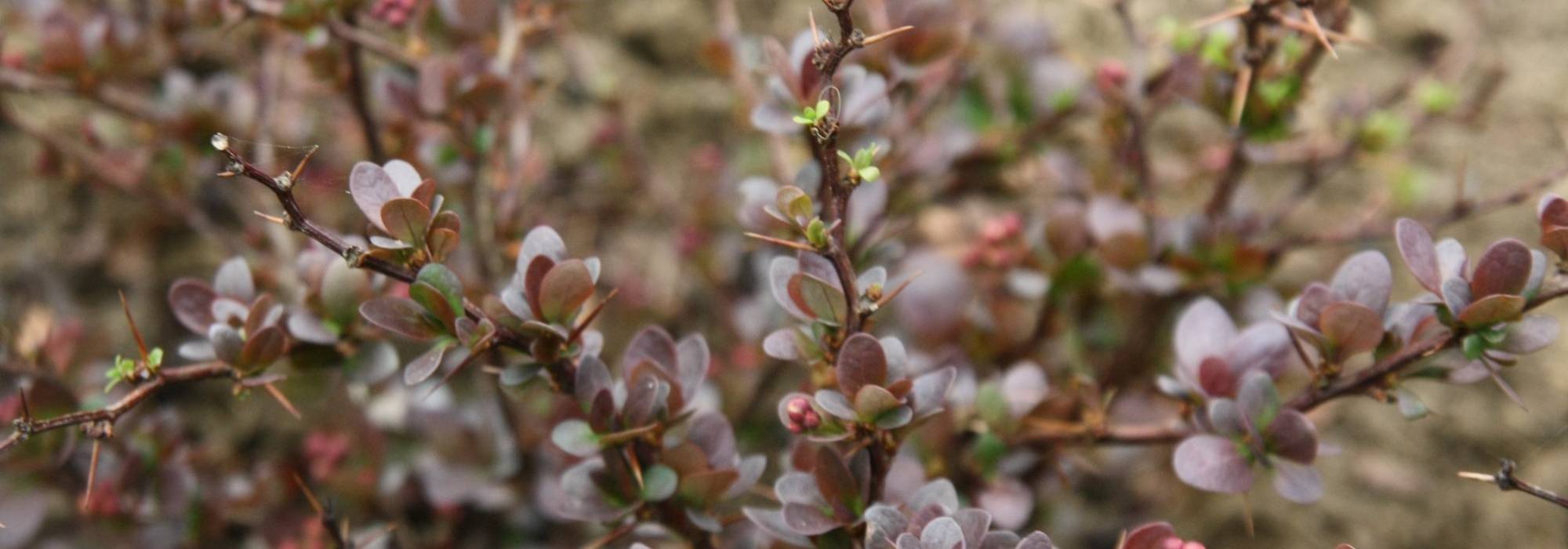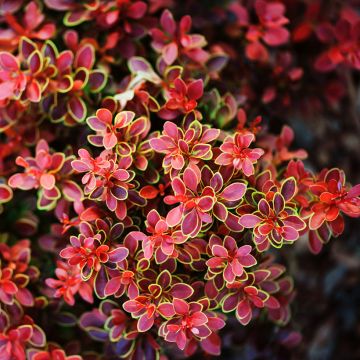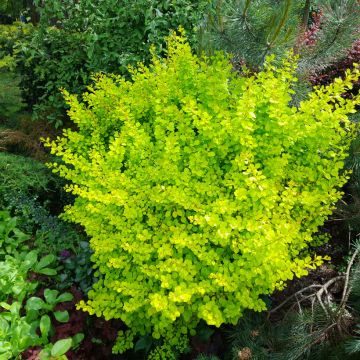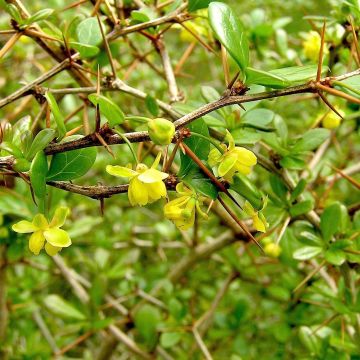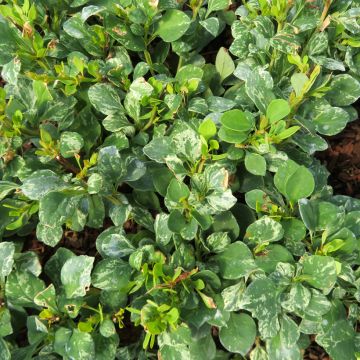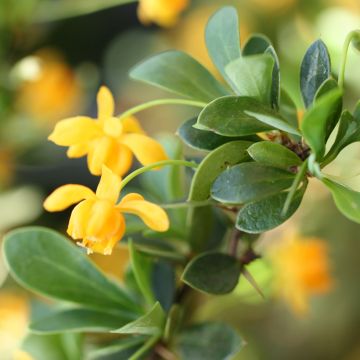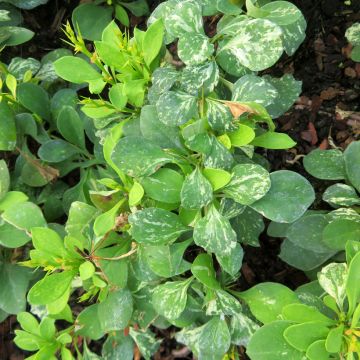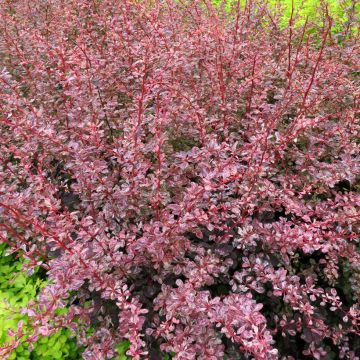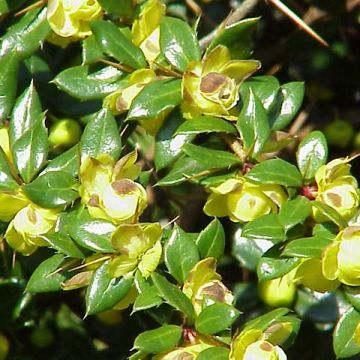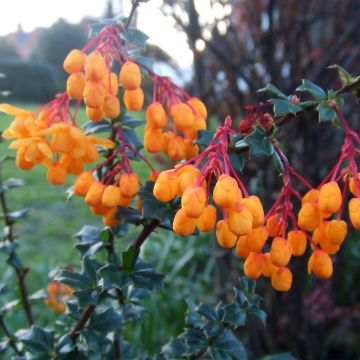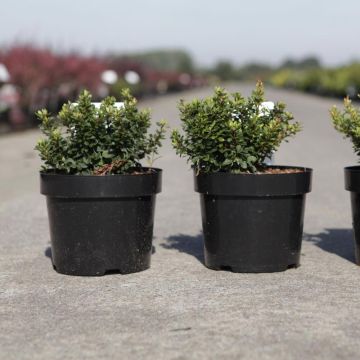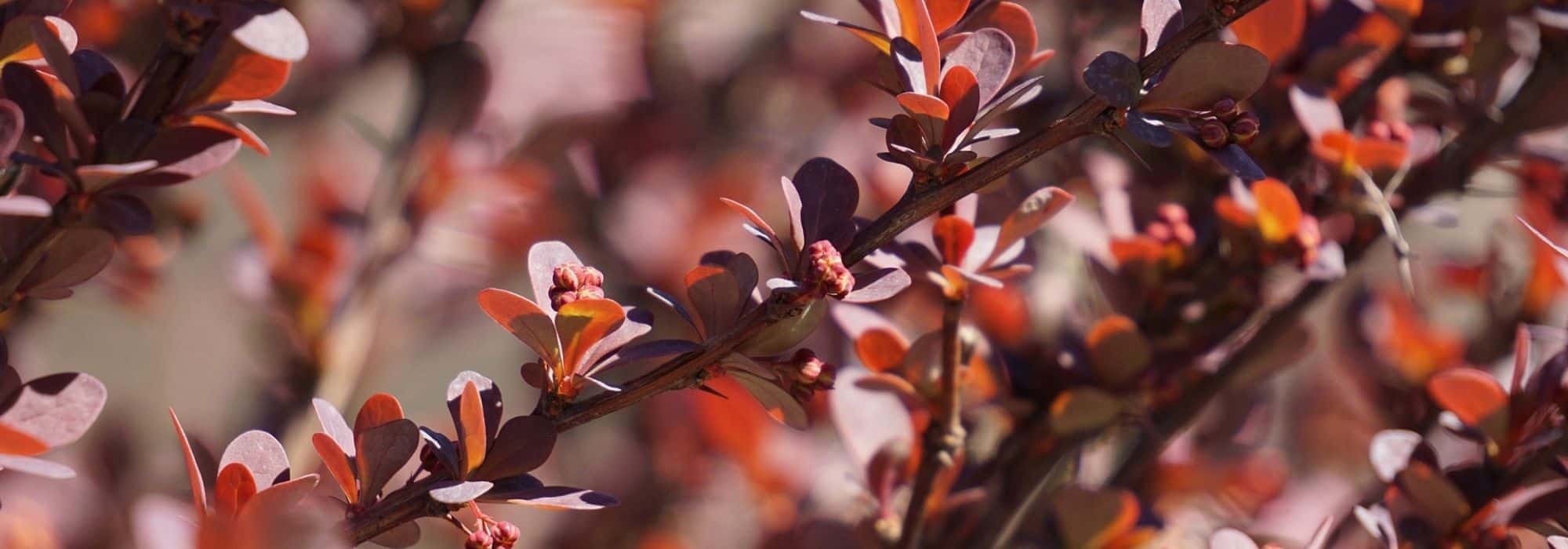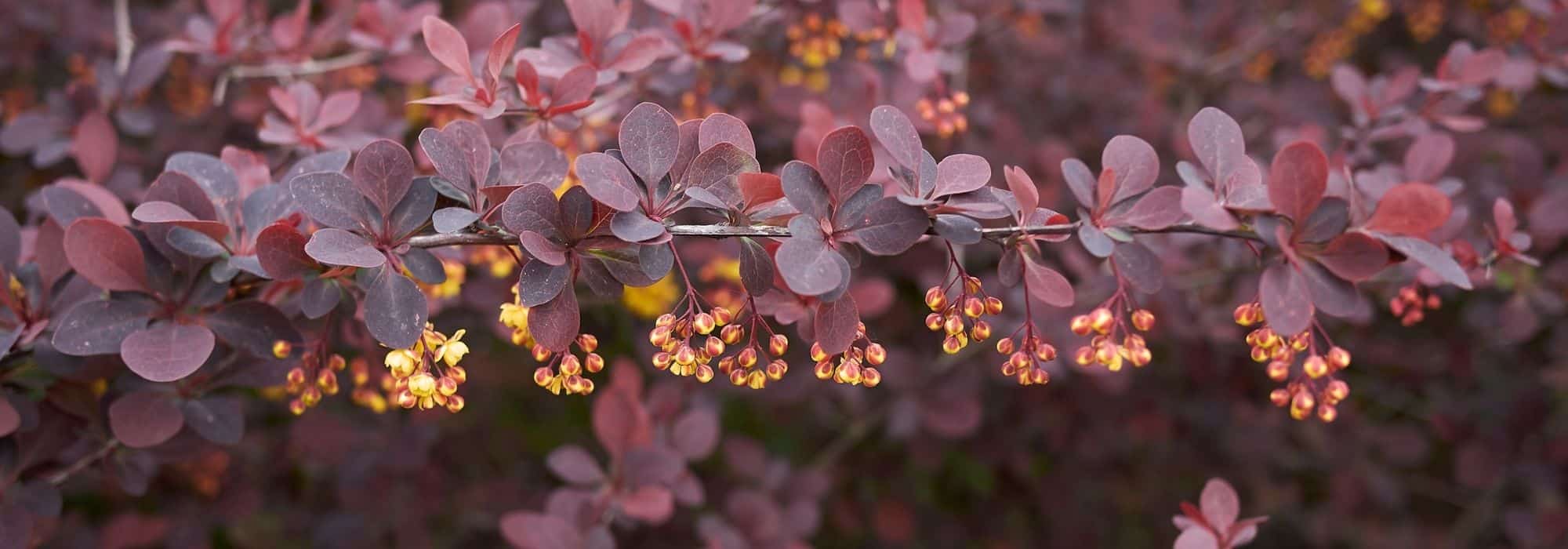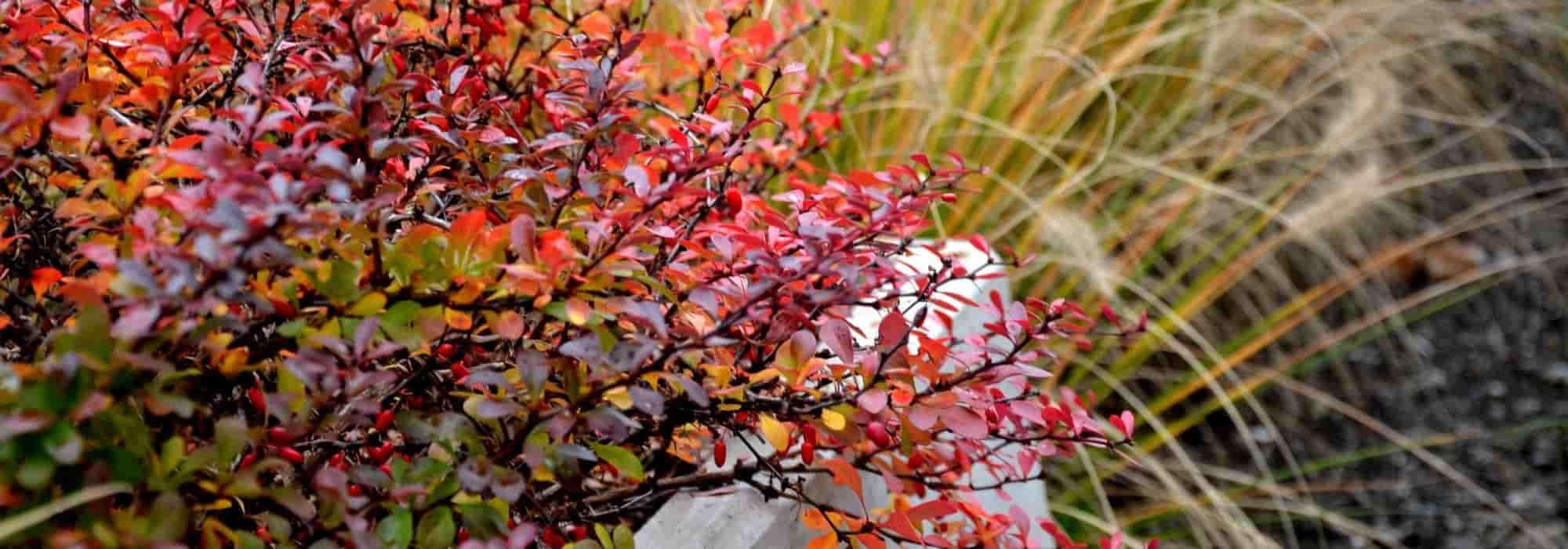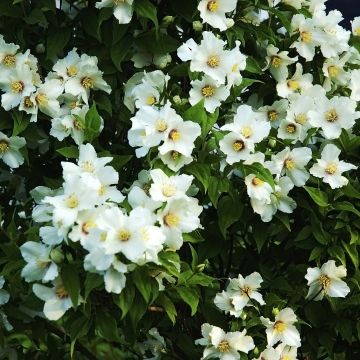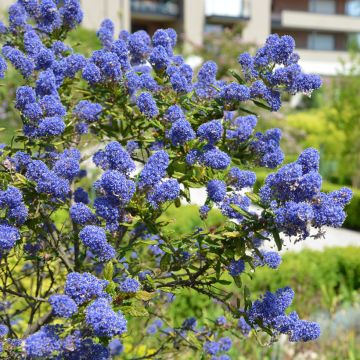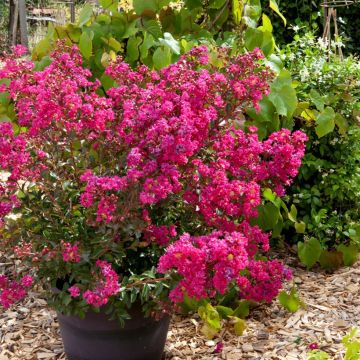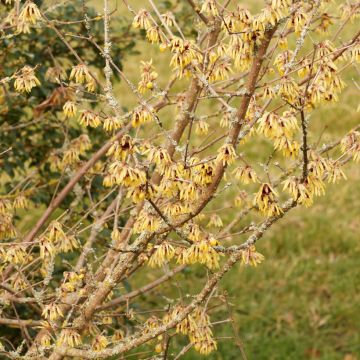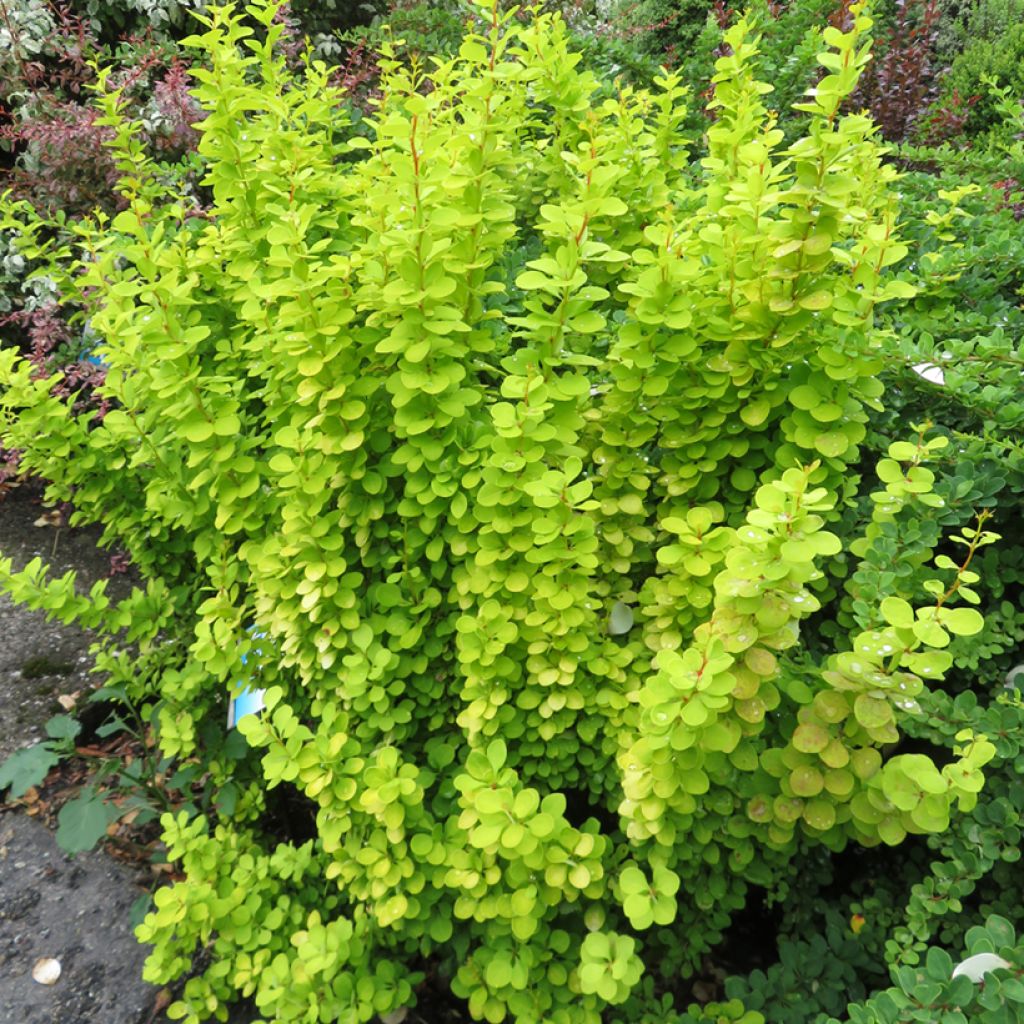

Berberis thunbergii Golden Torch
Berberis thunbergii Golden Torch
Berberis thunbergii 'Torchd'Or' GOLDEN TORCH®
Japanese Barberry, Thunberg's Barberry, Torch d'Or
Special offer!
Receive a €20 voucher for any order over €90 (excluding delivery costs, credit notes, and plastic-free options)!
1- Add your favorite plants to your cart.
2- Once you have reached €90, confirm your order (you can even choose the delivery date!).
3- As soon as your order is shipped, you will receive an email containing your voucher code, valid for 3 months (90 days).
Your voucher is unique and can only be used once, for any order with a minimum value of €20, excluding delivery costs.
Can be combined with other current offers, non-divisible and non-refundable.
Home or relay delivery (depending on size and destination)
Schedule delivery date,
and select date in basket
This plant carries a 24 months recovery warranty
More information
We guarantee the quality of our plants for a full growing cycle, and will replace at our expense any plant that fails to recover under normal climatic and planting conditions.
Would this plant suit my garden?
Set up your Plantfit profile →
Description
The Berberis thunbergii 'Golden Torch' is a variety of barberry with very bright foliage and an upright and compact habit. Its young lemon yellow shoots in spring contrast with the orange stems. The foliage turns red in autumn. In May, it bears small yellow flowers, with buds tinged with red, followed by bright red berries in September-October. This healthy variety tolerates sun and does not require pruning except to improve its columnar appearance. It can be planted as a border, in a shrub bed, or as a low hedge.
The Berberis thunbergii, also known as Japanese Barberry or Thunberg's Barberry, is a shrub from the Berberidaceae family native to Japan. It is characterised by a spreading, low bushy habit and deciduous foliage in winter or almost evergreen in mild climates. It is a hardy and undemanding plant, water-efficient, and tolerant of limestone soils.
The 'Golden Torch' cultivar has a narrow, very dense, slightly stiff habit, supported by vertical branches. It reaches about 1m in height with a spread of 50cm at maturity. The young branches are reddish-orange and have mildly aggressive thorns. The foliage is the main asset of this barberry. It consists of glossy leaves measuring 3cm long and ovate to a rounded shape. The colour is a bright yellow, with a slightly greener shade in summer. In April-May, clusters of 1 to 6 small flowers bloom on 1-year-old stems. The bell-shaped flowers, 1cm long, are a soft yellow slightly streaked with red. They are highly nectariferous and are followed in September-October by small spherical bright red fruits, 6 to 8mm long, persisting on the branches throughout winter. The foliage turns a beautiful orange-to-red colour before falling.
The 'Golden Torch' Barberry is a tolerant shrub to different soil types and responds well to pruning. It appreciates the sun, but to avoid intense spring and midday summer exposures, it is planted in partial shade in regions where necessary. Its foliage blends perfectly with a colour palette ranging from red to orange and blue, creating a colourful mixed hedge. Plant it alongside shrubs such as pink-flowered Kolkwitzia and red-flowered Japanese Quince, and don't forget the yellow to orange flowers of Kerria japonica or the blue flowers of Ceanothus thyrsifolius repens, for example. It can also be used with colourful evergreen foliage or in other shades of green.
Plant habit
Flowering
Foliage
Botanical data
Berberis
thunbergii
'Torchd'Or' GOLDEN TORCH®
Berberidaceae
Japanese Barberry, Thunberg's Barberry, Torch d'Or
Cultivar or hybrid
Other Berberis - Barberries
View all →Planting and care
The Berberis thunbergii 'Golden Torch', hardy up to -15°C, should be planted in spring or autumn in any fresh, well-drained soil, even limestone, poor or stony in a sunny position; reserve partial shade for the South or West of France. Water generously and frequently during the first summers. There is no need to fertilise. It requires little maintenance, just make sure to keep the soil moist especially in summer. For Berberis planted in hedges, balance the shape in spring and September. Trim the branches after flowering in free hedges to give the bush a rounded, balanced shape. Be careful not to touch the branches with bare hands as they have thorns that are difficult to remove once they penetrate the skin.
Planting period
Intended location
Care
Planting & care advice
This item has not been reviewed yet - be the first to leave a review about it.
Similar products
Haven't found what you were looking for?
Hardiness is the lowest winter temperature a plant can endure without suffering serious damage or even dying. However, hardiness is affected by location (a sheltered area, such as a patio), protection (winter cover) and soil type (hardiness is improved by well-drained soil).

Photo Sharing Terms & Conditions
In order to encourage gardeners to interact and share their experiences, Promesse de fleurs offers various media enabling content to be uploaded onto its Site - in particular via the ‘Photo sharing’ module.
The User agrees to refrain from:
- Posting any content that is illegal, prejudicial, insulting, racist, inciteful to hatred, revisionist, contrary to public decency, that infringes on privacy or on the privacy rights of third parties, in particular the publicity rights of persons and goods, intellectual property rights, or the right to privacy.
- Submitting content on behalf of a third party;
- Impersonate the identity of a third party and/or publish any personal information about a third party;
In general, the User undertakes to refrain from any unethical behaviour.
All Content (in particular text, comments, files, images, photos, videos, creative works, etc.), which may be subject to property or intellectual property rights, image or other private rights, shall remain the property of the User, subject to the limited rights granted by the terms of the licence granted by Promesse de fleurs as stated below. Users are at liberty to publish or not to publish such Content on the Site, notably via the ‘Photo Sharing’ facility, and accept that this Content shall be made public and freely accessible, notably on the Internet.
Users further acknowledge, undertake to have ,and guarantee that they hold all necessary rights and permissions to publish such material on the Site, in particular with regard to the legislation in force pertaining to any privacy, property, intellectual property, image, or contractual rights, or rights of any other nature. By publishing such Content on the Site, Users acknowledge accepting full liability as publishers of the Content within the meaning of the law, and grant Promesse de fleurs, free of charge, an inclusive, worldwide licence for the said Content for the entire duration of its publication, including all reproduction, representation, up/downloading, displaying, performing, transmission, and storage rights.
Users also grant permission for their name to be linked to the Content and accept that this link may not always be made available.
By engaging in posting material, Users consent to their Content becoming automatically accessible on the Internet, in particular on other sites and/or blogs and/or web pages of the Promesse de fleurs site, including in particular social pages and the Promesse de fleurs catalogue.
Users may secure the removal of entrusted content free of charge by issuing a simple request via our contact form.
The flowering period indicated on our website applies to countries and regions located in USDA zone 8 (France, the United Kingdom, Ireland, the Netherlands, etc.)
It will vary according to where you live:
- In zones 9 to 10 (Italy, Spain, Greece, etc.), flowering will occur about 2 to 4 weeks earlier.
- In zones 6 to 7 (Germany, Poland, Slovenia, and lower mountainous regions), flowering will be delayed by 2 to 3 weeks.
- In zone 5 (Central Europe, Scandinavia), blooming will be delayed by 3 to 5 weeks.
In temperate climates, pruning of spring-flowering shrubs (forsythia, spireas, etc.) should be done just after flowering.
Pruning of summer-flowering shrubs (Indian Lilac, Perovskia, etc.) can be done in winter or spring.
In cold regions as well as with frost-sensitive plants, avoid pruning too early when severe frosts may still occur.
The planting period indicated on our website applies to countries and regions located in USDA zone 8 (France, United Kingdom, Ireland, Netherlands).
It will vary according to where you live:
- In Mediterranean zones (Marseille, Madrid, Milan, etc.), autumn and winter are the best planting periods.
- In continental zones (Strasbourg, Munich, Vienna, etc.), delay planting by 2 to 3 weeks in spring and bring it forward by 2 to 4 weeks in autumn.
- In mountainous regions (the Alps, Pyrenees, Carpathians, etc.), it is best to plant in late spring (May-June) or late summer (August-September).
The harvesting period indicated on our website applies to countries and regions in USDA zone 8 (France, England, Ireland, the Netherlands).
In colder areas (Scandinavia, Poland, Austria...) fruit and vegetable harvests are likely to be delayed by 3-4 weeks.
In warmer areas (Italy, Spain, Greece, etc.), harvesting will probably take place earlier, depending on weather conditions.
The sowing periods indicated on our website apply to countries and regions within USDA Zone 8 (France, UK, Ireland, Netherlands).
In colder areas (Scandinavia, Poland, Austria...), delay any outdoor sowing by 3-4 weeks, or sow under glass.
In warmer climes (Italy, Spain, Greece, etc.), bring outdoor sowing forward by a few weeks.






























